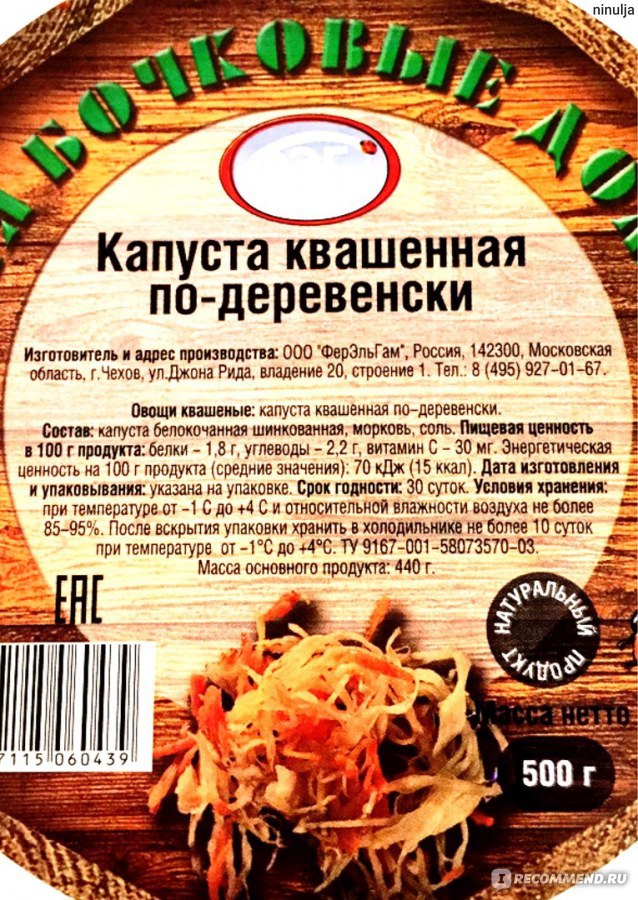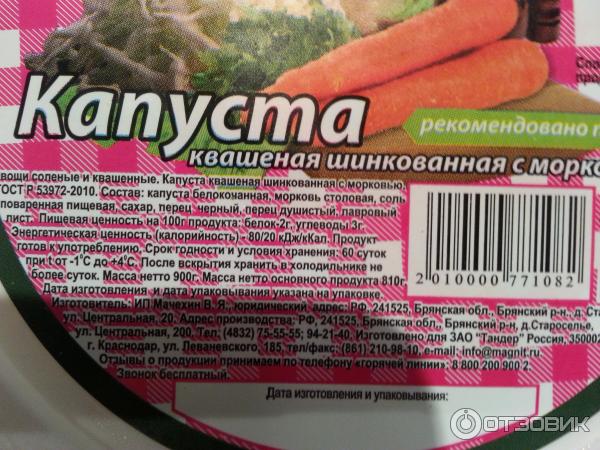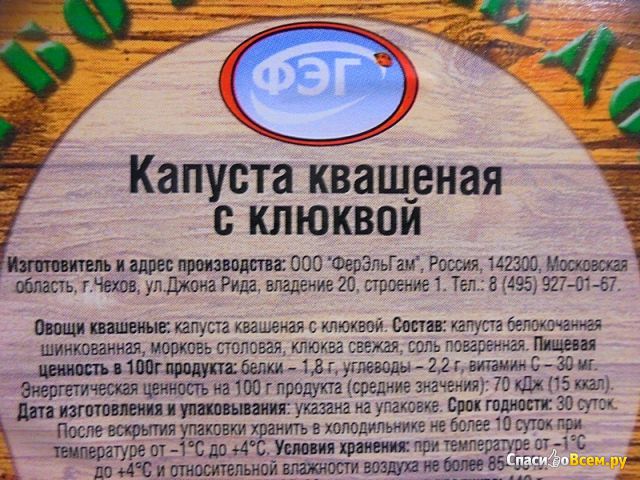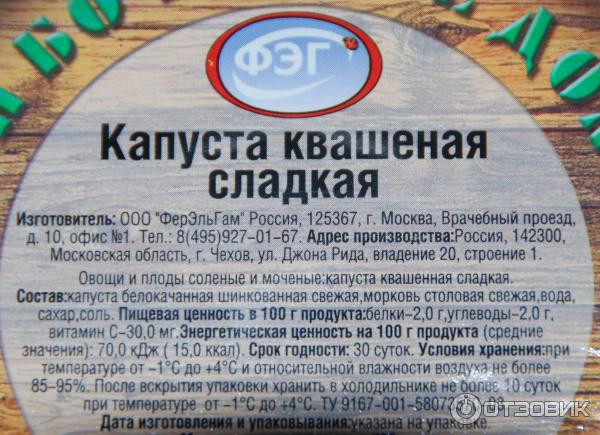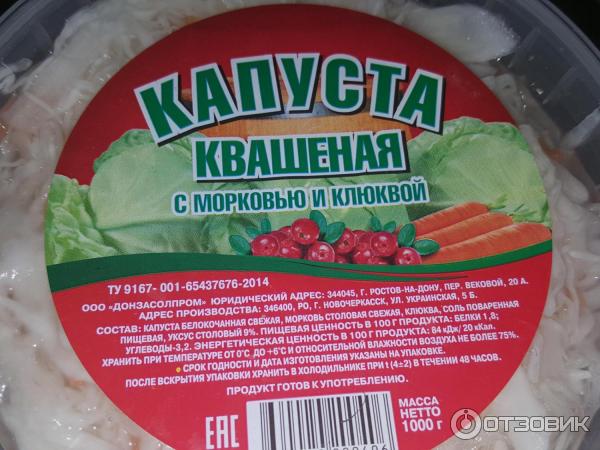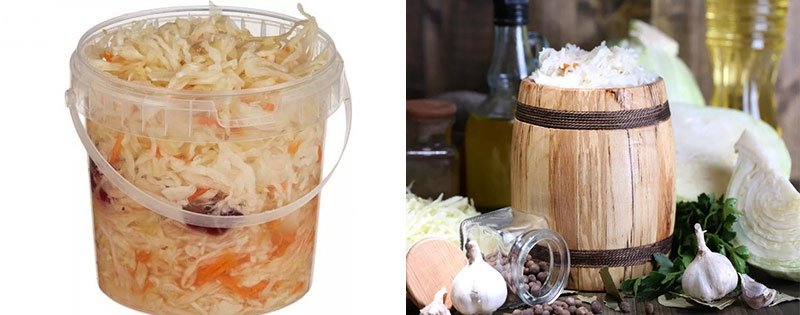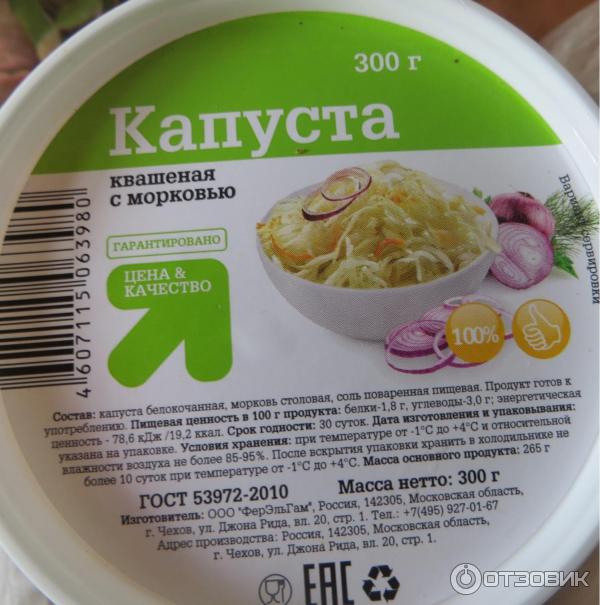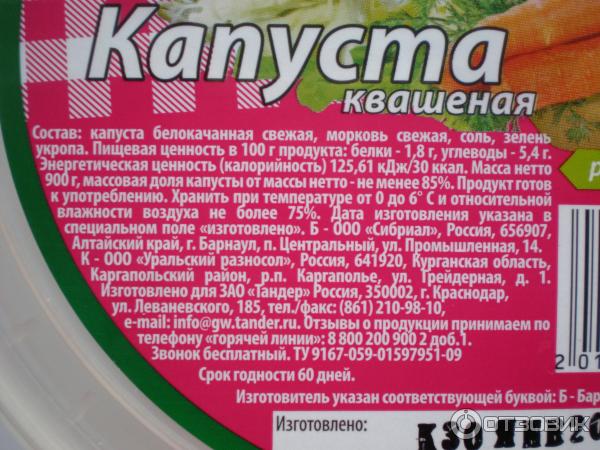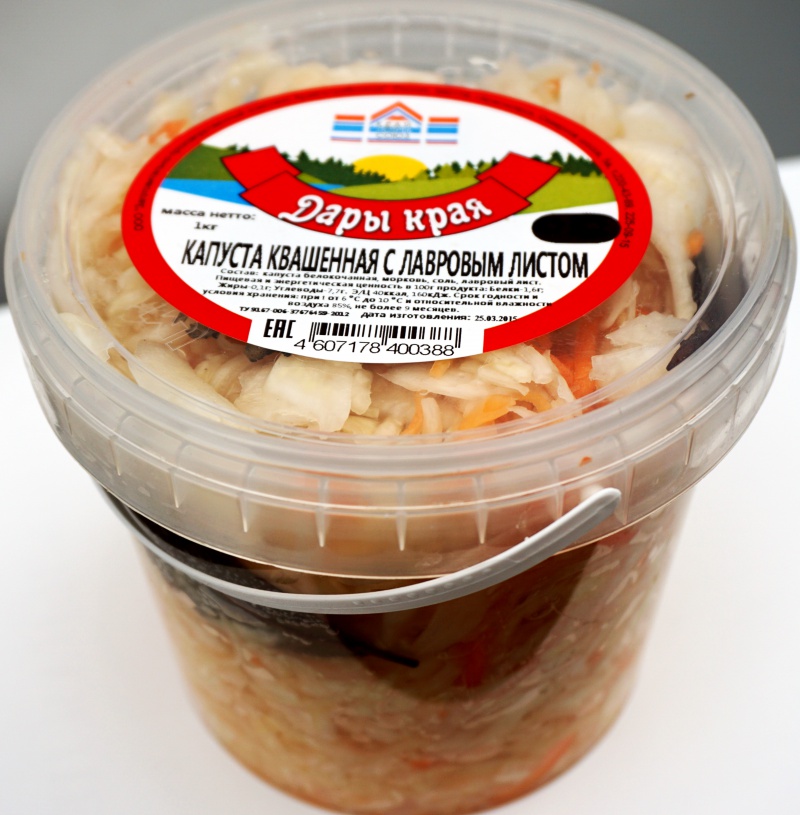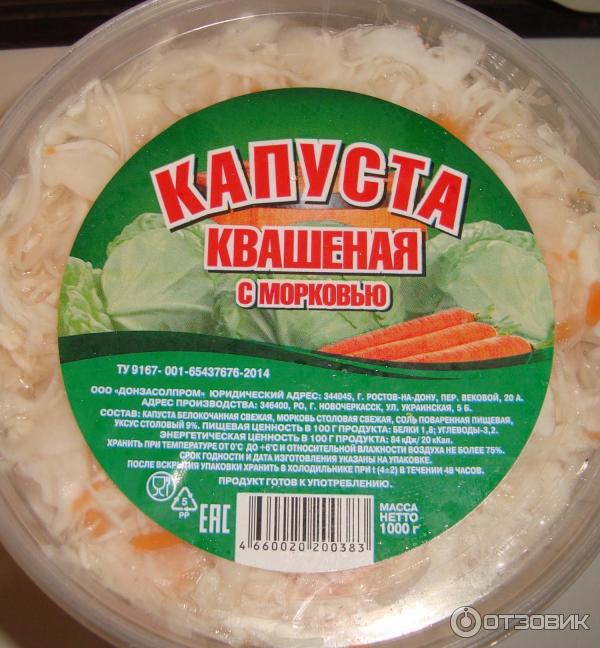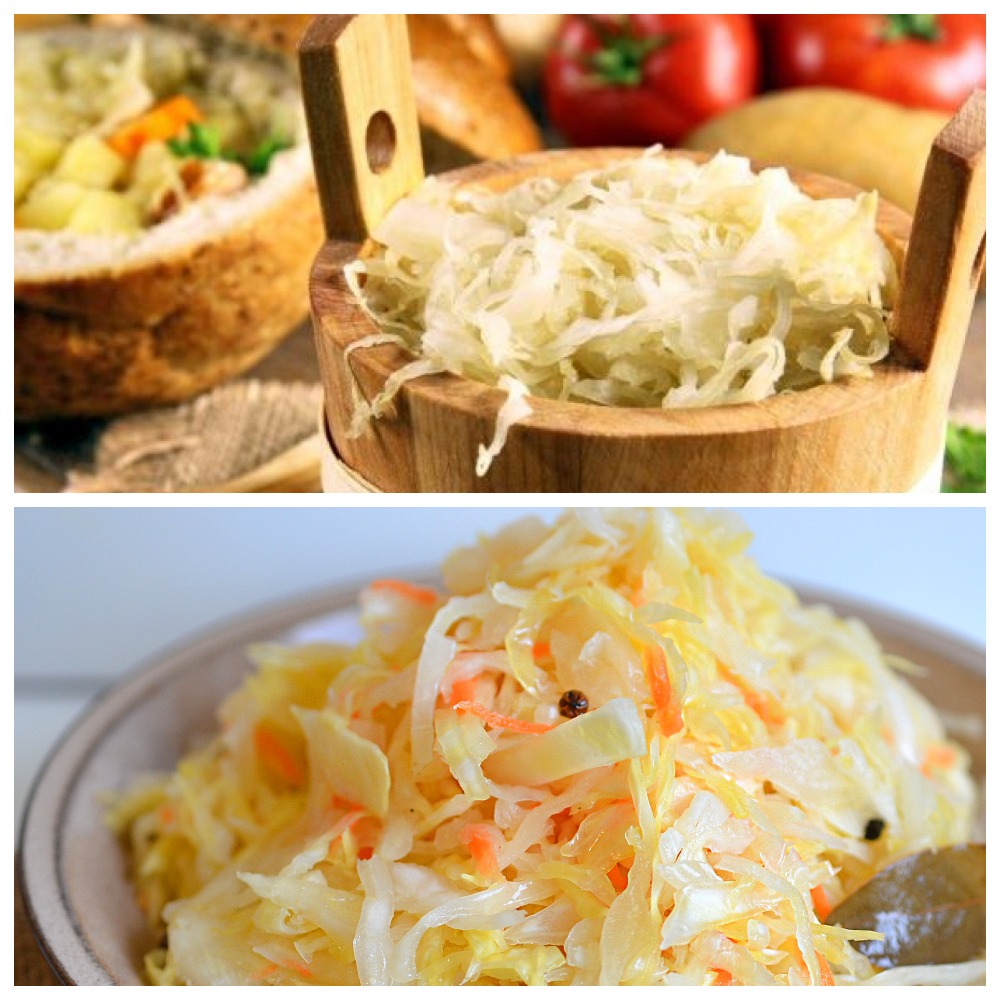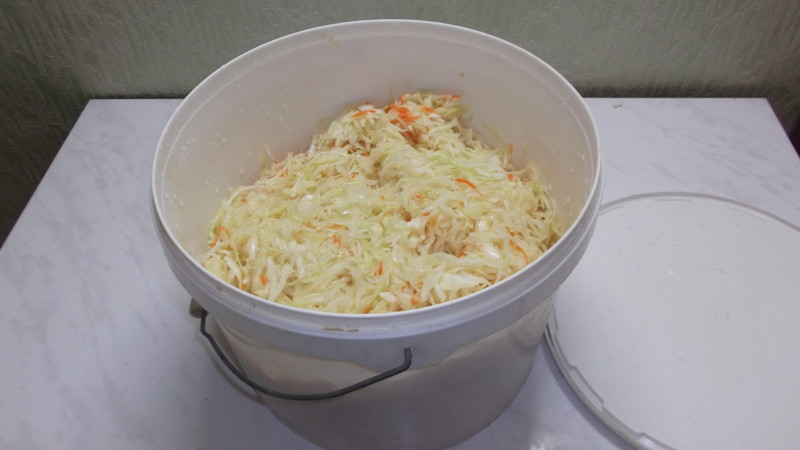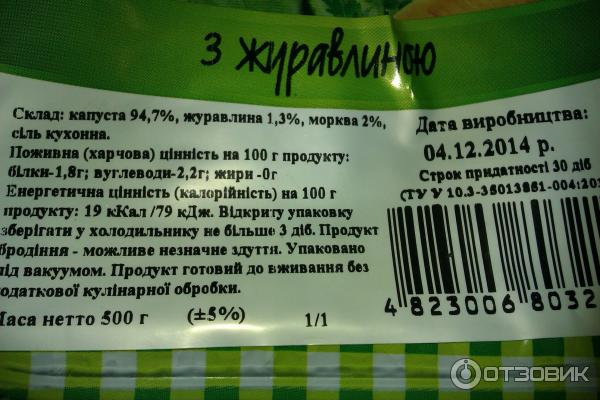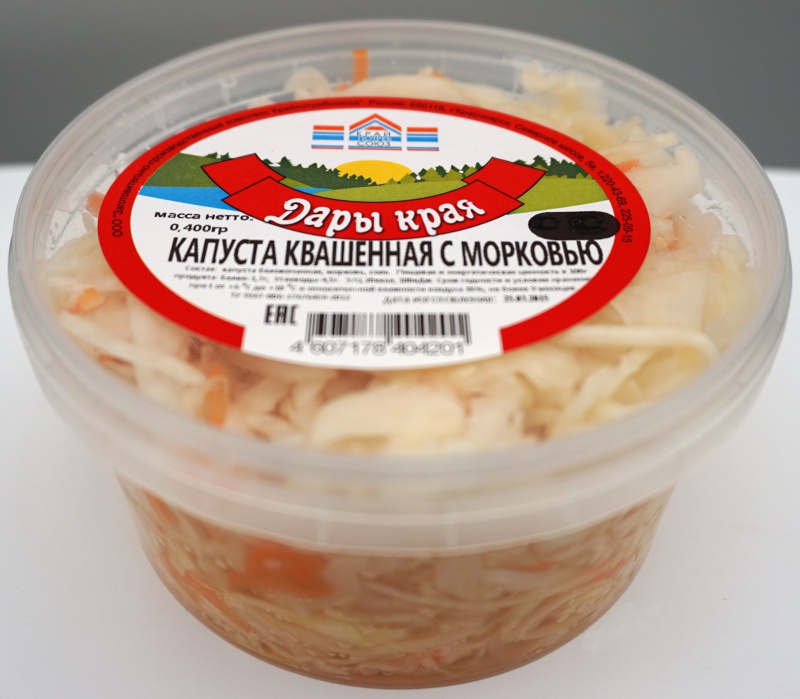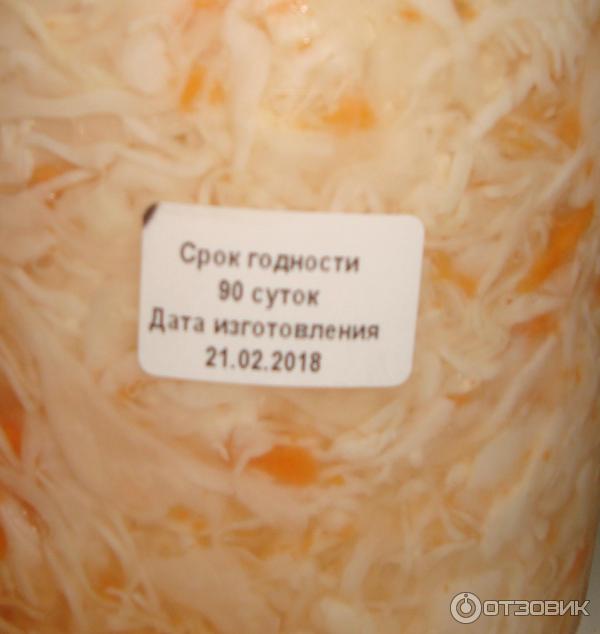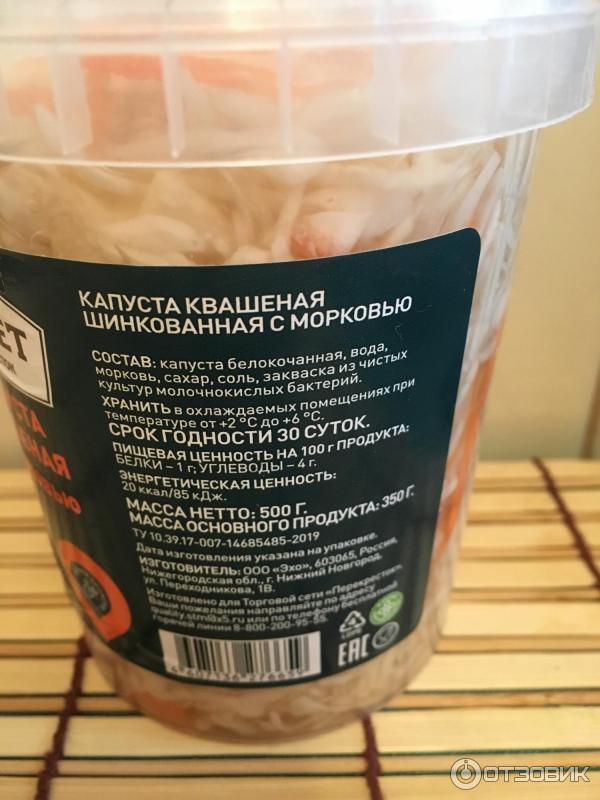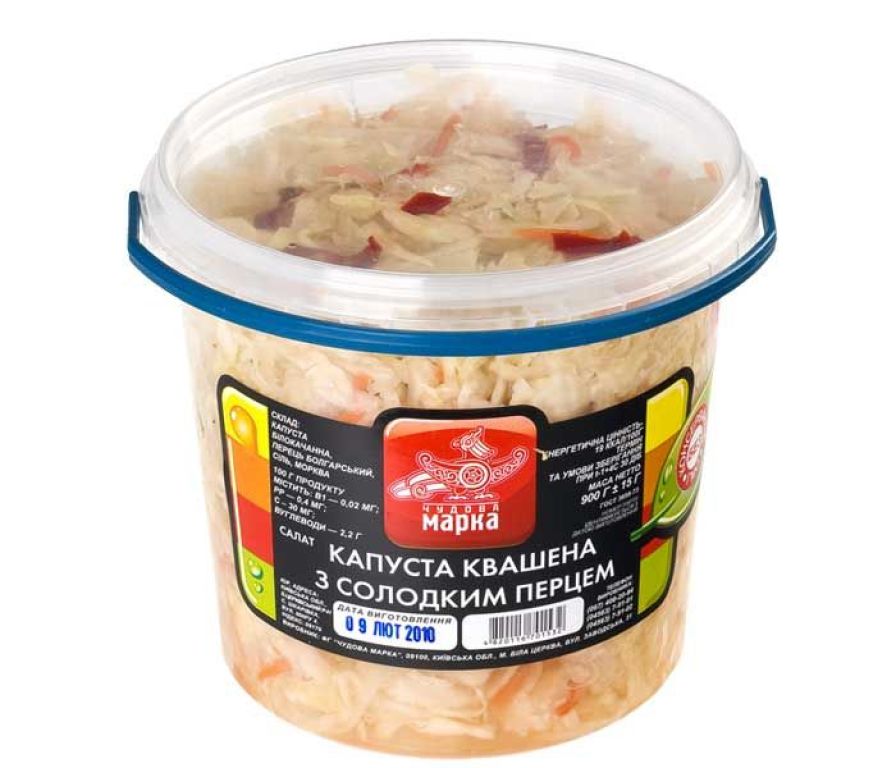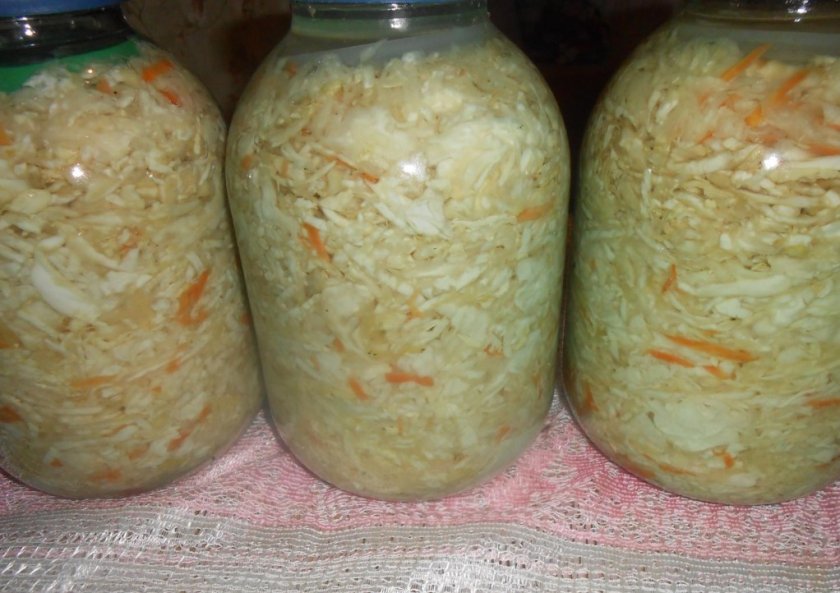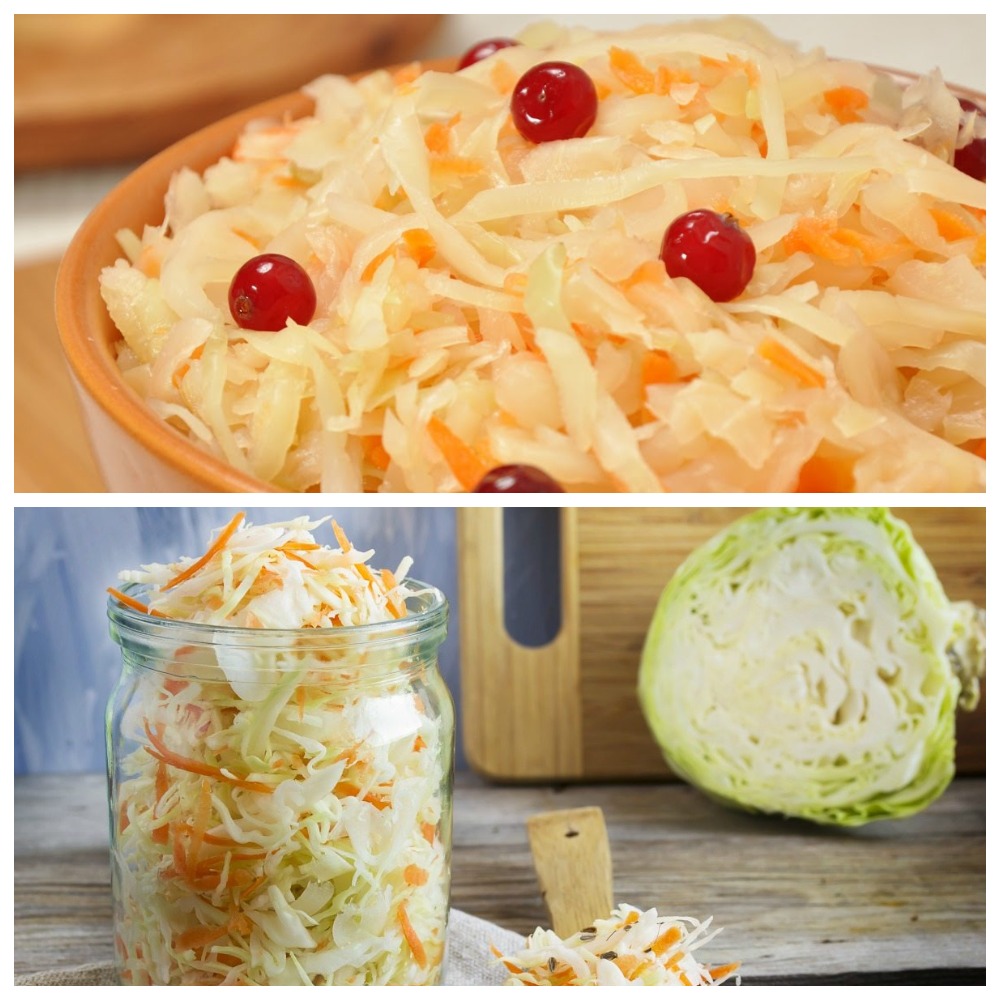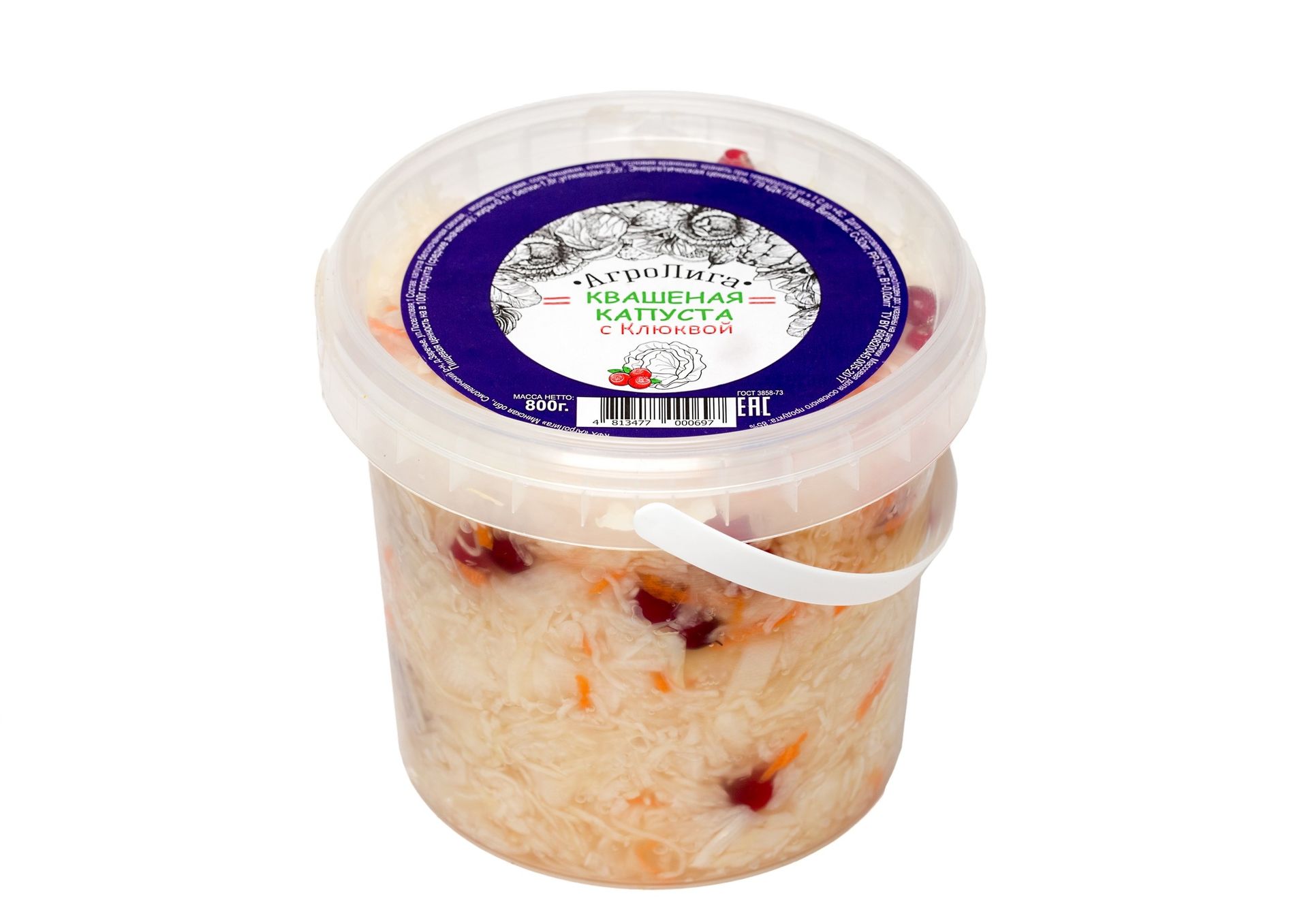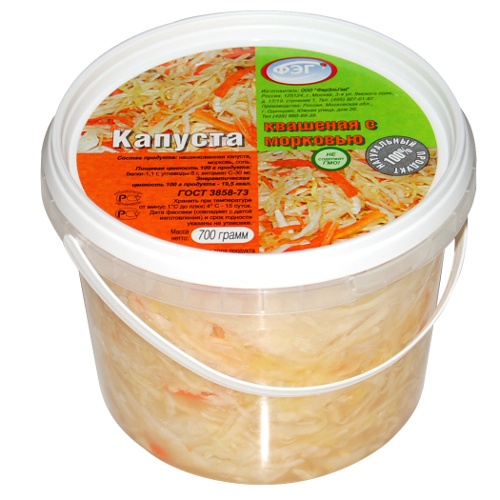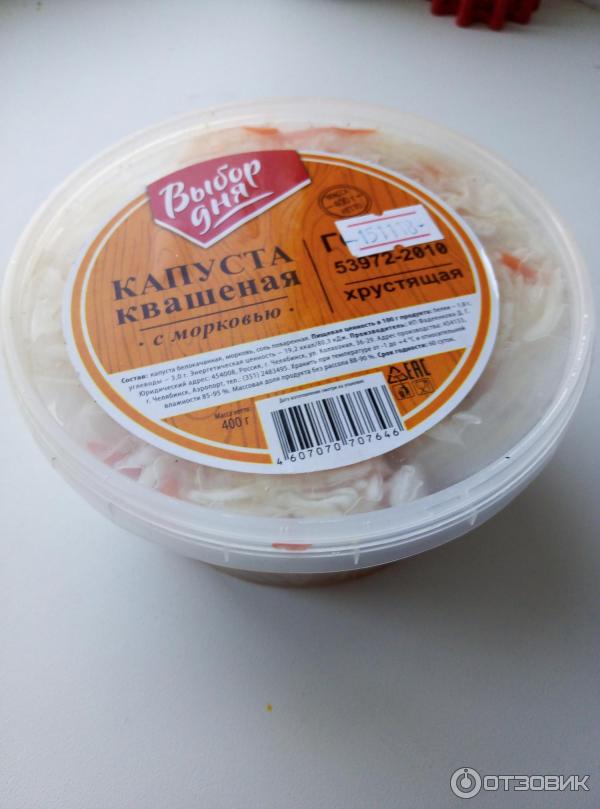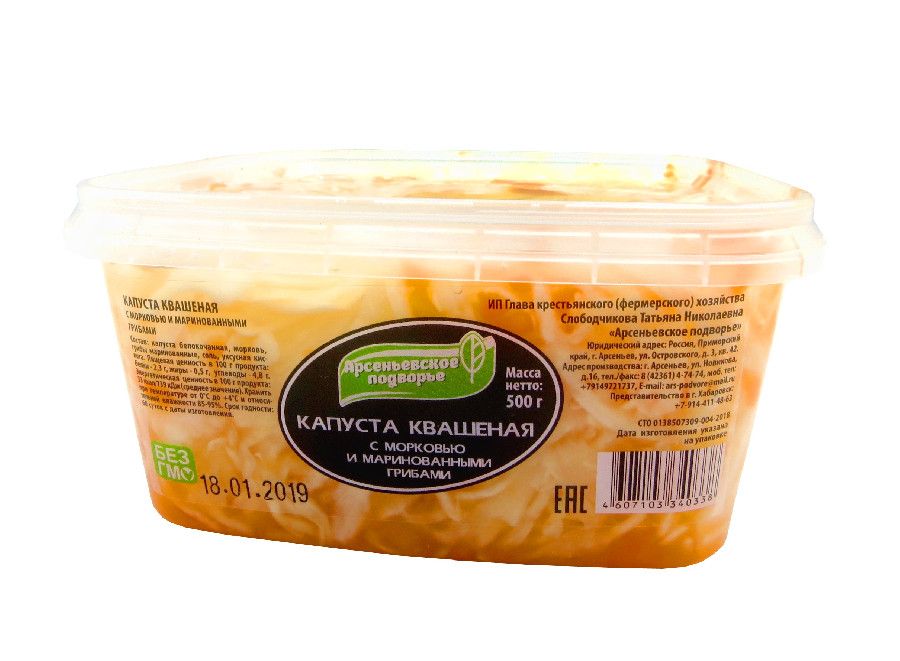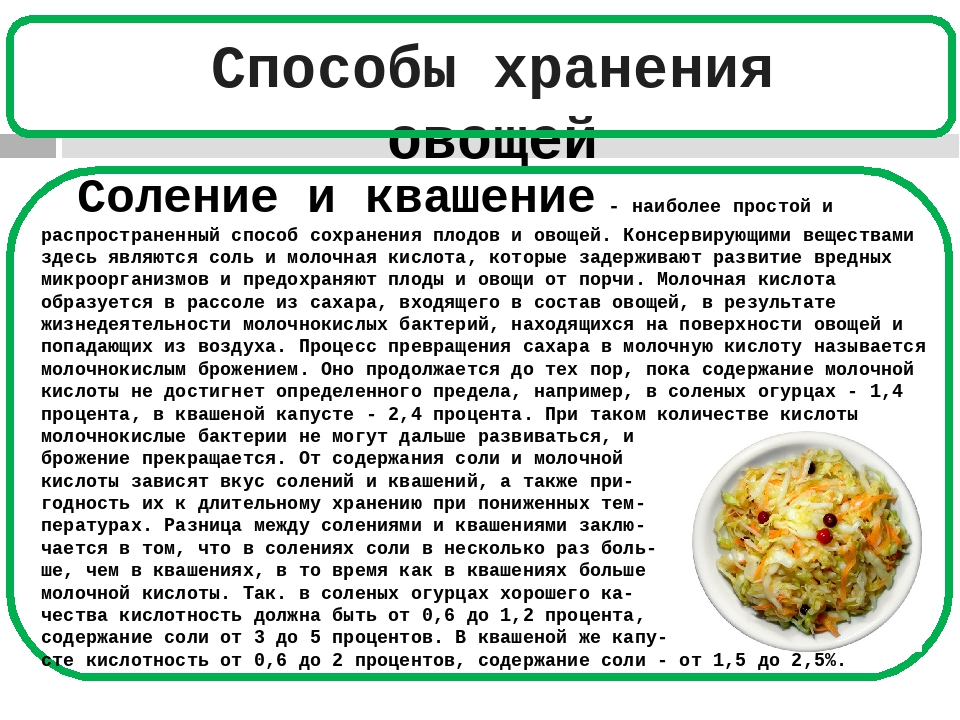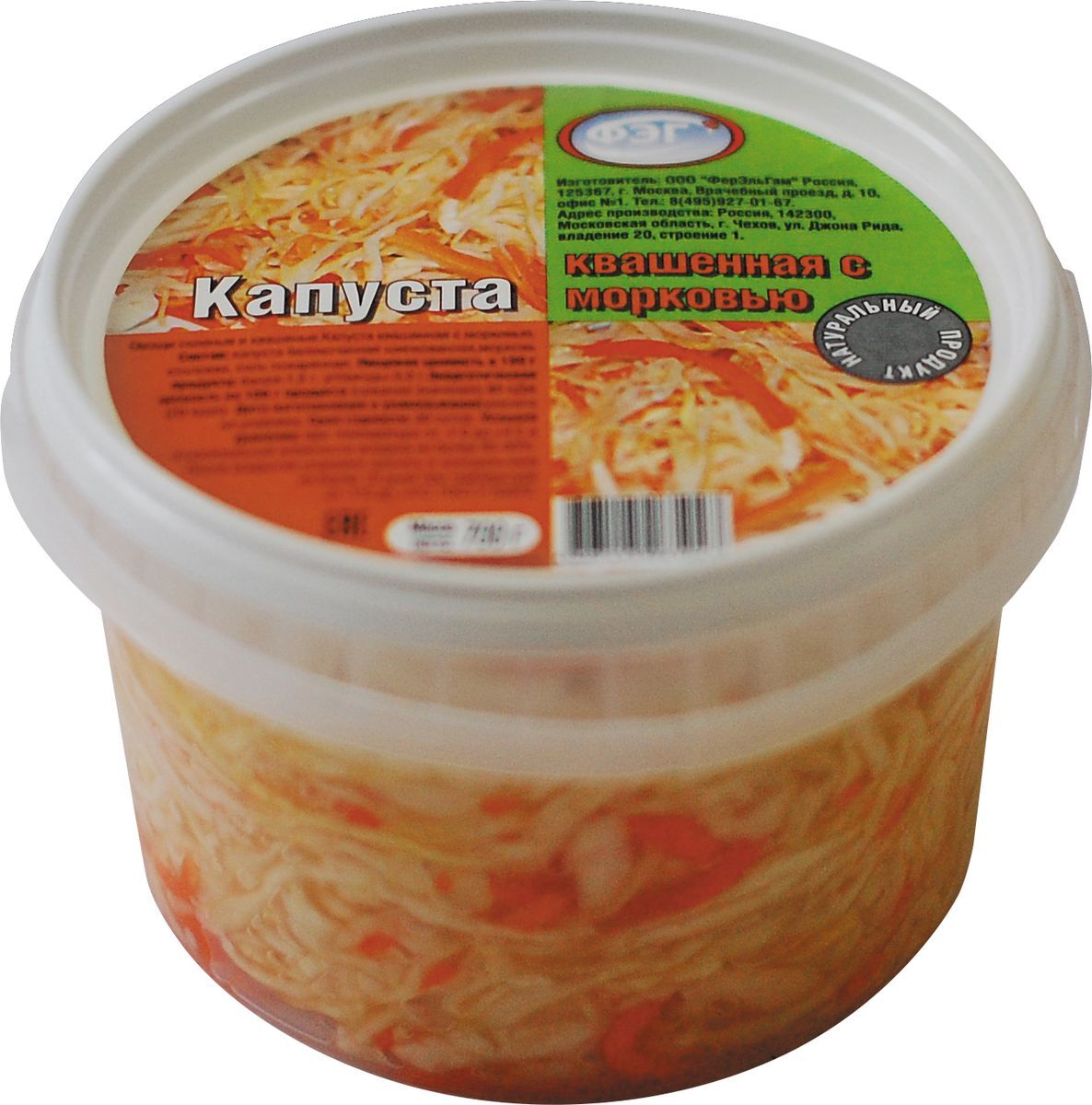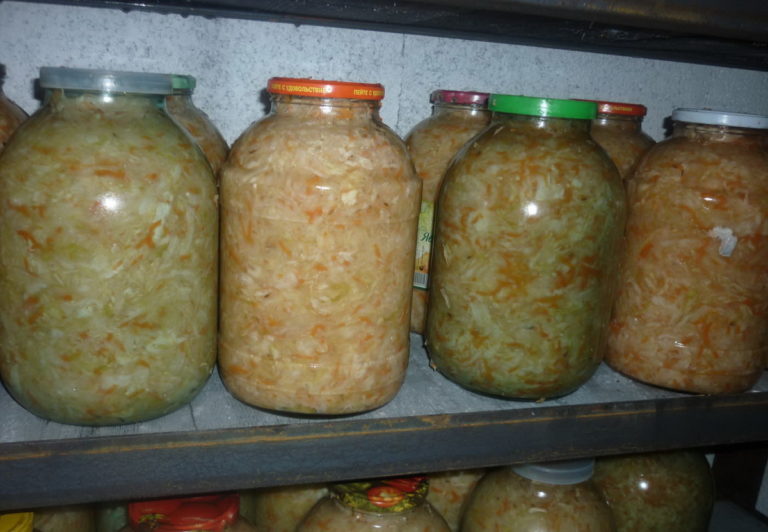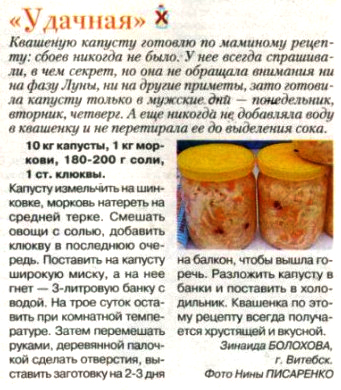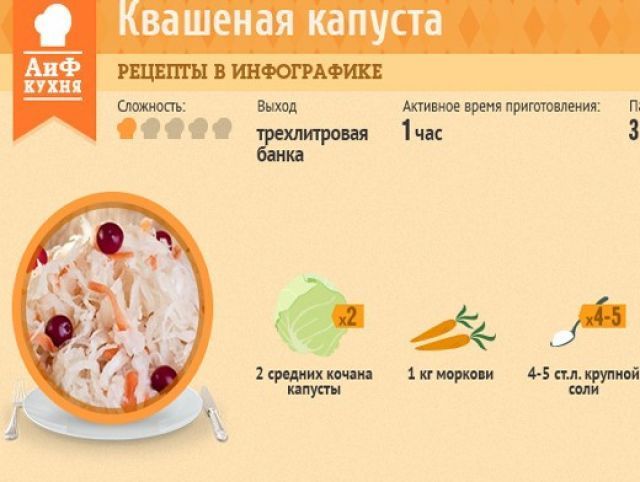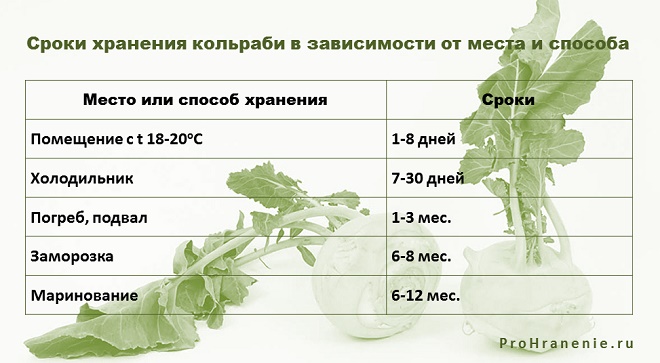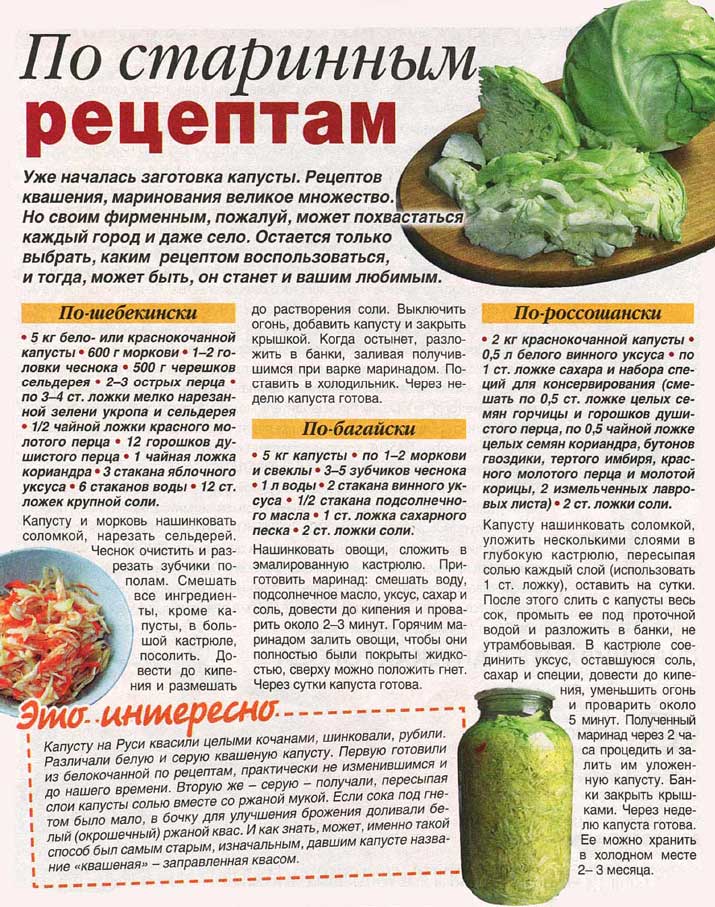What factors affect the quality and shelf life?
Cabbage variety
Much depends on the type of cabbage. Fermented cabbage of mid-season and late-ripening varieties is well preserved. It is she who ferments for a long time and retains a pleasant crunch and dense texture. Early ripe cabbage varieties are distinguished by the tenderness of the leaves and are more suitable for making salads or light soups, and it is better not to use them for preparations. Such cabbage will resemble boiled cabbage in consistency, and this is unacceptable in this case.
Cabbage varieties for pickling or pickling usually have juicy and very dense leaves with thin veins, which can be difficult to chop. The color of such heads of cabbage is very light, almost white. A vegetable with green leaves is in no way suitable for pickling, because such a preparation will most likely taste bitter.
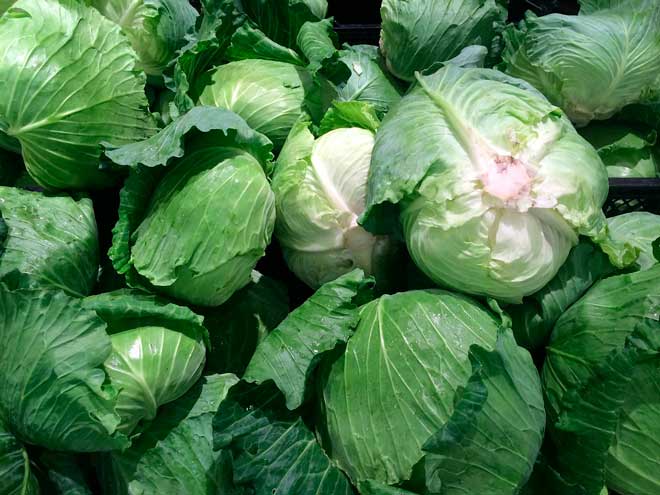 Early maturing varieties are not suitable for sourdough, like green leaves.
Early maturing varieties are not suitable for sourdough, like green leaves.
Storage container
You should not store sauerkraut in an aluminum container, as a reaction between the metal and the acid will begin, as a result of which the product will turn black and begin to taste bitter. Eating such a dish will be not only unpleasant, but also dangerous to health. Glass or enamelled containers are the most suitable option.
Temperature and humidity
The storage conditions for pickled or sauerkraut cabbage are similar in terms of temperature, the ideal is considered to be from +2 ˚C to +5 ˚C. At elevated temperatures, storing cabbage will not work: it will quickly turn sour.
You can also freeze the product, if it is not possible to store it in ideal conditions, it is better to do this in portions. In addition, it must be remembered that repeated freezing will be fatal for the product. but also very undesirable.
The storage temperature should be constant. It is recommended to store sauerkraut at a sufficiently high humidity; excessive dryness does not benefit this dish.
Mold protection
Late varieties of cabbage can be stored in sauerkraut for the longest time - up to six months, especially in the cellar, adding cranberries or lingonberries to the delicacy, which will help prevent mold. Mustard and its seeds have the same properties, as well as sugar if sprinkled on the finished product from time to time.
 White cabbage is good for sourdough, giving the best taste and shelf life.
White cabbage is good for sourdough, giving the best taste and shelf life.
Brine quantity
Sauerkraut or pickled cabbage should be stored so that the brine completely covers the shredded leaves. If it becomes insufficient, add the required amount of cool water with the addition of salt to the container with the workpiece. Cabbage fermented in large containers is specially pressed down with oppression, because only being in the brine, the product will retain that incredible amount of vitamin C and other useful substances that it contains.
How to store carrots in the refrigerator. How to store carrots in a plastic bag all winter
Carrots have become part of the daily diet of people living in different countries and continents. This root vegetable is not only tasty, but very healthy. It is used to prepare both first and second courses, as well as to create desserts and preserves. The vegetable has about 60 species, and its cultivation does not present any particular difficulties, which cannot be said about storing carrots. Rotting or drying of a vegetable with a loss of taste and useful qualities, alas, often happens with this root vegetable. How to avoid this and is it possible to save carrots in plastic bags - let's sort it out together.

Optimal storage conditions for this root crop are achieved at temperatures from 0 to + 3 ° C and a relative humidity of about 90%. In addition, the storage area for carrots should be well ventilated.A basement or cellar will be an excellent storage for a whimsical vegetable lying in bed, the maximum shelf life of which can be up to 12 months.
One of the most convenient, easy-to-stack and hygienic ways of storing carrots is the ubiquitous plastic bags. This attribute, without which it is impossible to imagine the life of modern civilization, is widely available and has a low cost. However, storing carrots in plastic bags has its drawbacks. Firstly, this is not the longest possible shelf life of a vegetable. Secondly, frequent monitoring of the condition of carrots, drying them from condensation, replacing wet bags with new ones. These activities will help preserve root crops for up to 4 months.
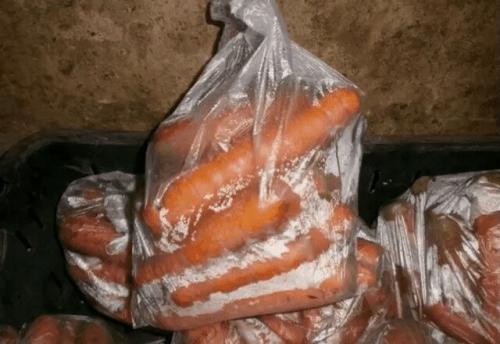
Before storing carrots for storage, they must be dried for 10-14 days, the tops must be cut off so that it does not pull off nutrients, and sorted. Only whole, undamaged, dry and clean vegetables are selected for storage.
It is very important to ensure timely harvesting. If the carrots are kept in the soil until frost, then gray rot may appear on them.
And if you harvest the crop ahead of time, when the earth has not yet had time to cool down, and send the carrots for storage in a cold cellar, this can also adversely affect the storage time of root crops. Many gardeners are guided by the condition of the lower leaves of carrots: as soon as they turn yellow, it's time to dig out the harvest.
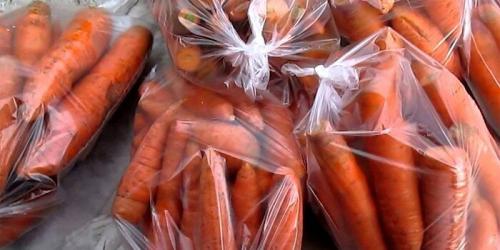
When storing carrots in a cellar, plastic bags of any size are suitable. If there are a lot of root vegetables, then you can use plastic bags that can hold up to 20 kg of vegetables. It is imperative to make a sufficient number of holes on the bags to evaporate condensate, especially at the bottom of the bags, and place them on a stand. You do not need to tie the bags tightly.
You can store carrots in plastic bags not in the cellar, but in the refrigerator, both as a whole and in chopped form. The latter is stored in the freezer, which significantly increases the shelf life of vegetables. By the way, it is not recommended to store carrots in vacuum bags either in the cellar or in the refrigerator. During storage, root vegetables emit carbon dioxide, which, accumulating in a vacuum, will lead to rapid deterioration of vegetables.
What to do to keep cabbage longer
You can increase the shelf life of sauerkraut by adding oxidizing berries to it: lingonberries, cranberries, wild berries. With the regular addition of sugar, vinegar gradually forms, which also has a preservative effect.
In the absence of a balcony, cellar or basement, you can make a blank for long-term storage in the apartment.
This will require (for 5 kg of product):
- Carrots - 3 pcs.;
- Salt - 90 gr.;
- Sugar - 80 gr.;
- Bay leaf - 5 pcs.
Instead of sugar, you can put honey.
Prepare as follows:
- Peel the carrots and the top leaves of the cabbage. Cut the stumps.
- Grate the carrots and cut the cabbage into strips.
- Place in a large container, mix with spices and press down on top with a plate.
- Use a jar or bucket of water as a press.
- Leave warm for 4 days to ferment the cabbage.
- The next day, transfer the starter culture to sterilized jars.
- Leave empty a distance of 3 cm from the lid of the jar to the contents.
- Place the jars in a large saucepan, pour water up to the "shoulders".
- Sterilize over low heat for about 30 minutes.
- Roll up with a special machine.
Such a product can be placed in a kitchen cabinet and stored throughout the winter. Get it out and use it in salads, soups and side dishes.
Sauerkraut can be stored in the refrigerator, freezer and even on the balcony under suitable climatic conditions. In the refrigerator, the shelf life is up to 8 months, on the balcony - while there is a slight negative air temperature outside the window. It is also permissible to store beets on the balcony.
The optimal storage capacity is a jar or container made of food grade plastic. Ideally, it is better not to freeze the cabbage, otherwise it will lose some of its vitamins. For long-term storage in the freezer for the winter, it is recommended to pack it in portions in order to defrost not the entire workpiece, but only the part that will be used within a couple of days.
Previous
Vegetables and fruitsCranberry storage methods at home
Next
Vegetables and fruitsPomegranate storage rules at home
Choosing cabbage for pickling correctly

For this purpose - pickling - only late-ripe varieties of cabbage are suitable. Therefore, harvesting is often done before winter and for a long time, fermenting a large amount of leafy vegetable so that it will last until spring. Also, late-ripening varieties are also chosen because of their increased density, which also increases the taste characteristics of pickles.
Cabbage, which reaches technical maturity in the summer season, is a good addition to vitamin vegetable salads. But in a fermented form, it cannot lie for a long time. Under the influence of table salt, the fibers of cabbage leaves of early and medium varieties soften, lose some vitamins, taste and do not crunch. At the same time, not all cabbage heads are suitable for fermentation, but only those forks that meet the following characteristics:
- when squeezed, the cabbage head does not deform, retains its elasticity;
- there is no damage on the surface of the cabbage leaves;
- the stump is light green or cream, without rings or other dark markings;
- the head of the cabbage does not have sluggish, rotten or frostbitten leaves.
On a note!
For long-term storage of sauerkraut, you must follow all the recommendations. If the forks were damaged, the shelf life of the pickled vegetable is shorter.
Also, it must be borne in mind that you can also ferment early or middle varieties, but such cabbage will only be tasty for a few days, then it begins to acidify
Deciduous vegetable varieties
Late and late-ripening varieties are well suited for long-term storage:
- Present. The head of cabbage is dense, flat-rounded, light green in color. The variety is resistant to cold, suitable for growing in Siberia.
- Guarantor F1. The head of cabbage has an oval shape, outside the leaves are gray-green, in the section - yellow. Excellent taste. Suitable for long-term storage.
- Wintering 1474. The variety is highly resistant to frost. Heads of cabbage are medium in size, up to 3.5 kg, round-flat in shape. Keeping life up to 8 months.
- Gingerbread man F1. Late-ripening variety with dense heads of cabbage, does not crack, the stump is short. The surface of the head is green, in section it is white. Highly resistant to diseases and rot, excellent keeping quality.
- Moscow late. The variety is characterized by high yield and large fruits. Heads of cabbage weighing 8-13 kg, round, green. Ideal for fermentation.
How to understand that cabbage has gone bad. What to look for when choosing a cabbage?
To understand how to choose the right cabbage, you need to remember the basic rules for buying this vegetable.
- Choose heads of cabbage with fresh, uncleaned leaves. They should fit snugly together and not create the effect of an opened fruit.
- Avoid fruits with brown or black patches, even if they are small. This indicates damage by fungi or putrefactive bacteria.
- Examine the leaves for insect damage, which will show up as grooves and other defects on the leaves. Their large number suggests that it is better not to buy such cabbage.
- The head of cabbage must be strong. If, when squeezed, there is a feeling of softness and airiness, it is better not to choose it, as this indicates staleness or damage to the fetus.
- The leaves should be deep green. If they are dull, this is not in favor of such heads of cabbage.
- If the cabbage has yellow or sluggish leaves, it means a lack of freshness.
- The heads of cabbage should look clean and smooth, without obvious traces of chemical processing and signs of frostbite.
- Significant mechanical damage will lead to a rapid loss of vitamin C, so fruits with them should be avoided when choosing.
- If stored improperly, cabbage begins to sprout, which can be seen with the naked eye. Therefore, not only choose even, strong heads of cabbage, but also place them in the refrigerator with a temperature of 0 to 4 degrees, if you do not plan to use immediately after purchase.
- The presence of a large number of dry layers in the heads of cabbage (parchment of the inner leaves) is also a defect in connection with which the fruit should not be purchased.
Storing cabbage for the winter at home. How to store cabbage at home in winter?
The best varieties of cabbage for long-term storage
The following cabbage varieties proved to be excellent in winter:
- Blizzard variety - eight months.
- Grade Gift - seven months.
- Dombrovskaya variety - six months.
- Variety Kharkovskaya winter - seven months.
- Variety Belorusskaya - seven and a half months.
The following varieties also perform well:
- Variety Stone Head - year.
- Amager variety - nine months.
- Snow White variety - six months.
- Variety Aros and Atria - ten months.

storing cabbage
Places for long-term storage of cabbage
Cabbage harvest in winter should be stored in the following places:
Basement or cellar. In these places, it is necessary to stack the crop on shelves or hang it from the ceiling. If you have an excellent harvest, then you can stack everything in a pile, resembling a pyramid, be sure to fold it in stumps to the top. Before storing cabbage in these places, then it is necessary to put the premises in order so that it is clean, dry and there are no living beings there. As soon as it starts to get colder, the required temperature is set in such rooms, which helps to avoid losses. In such premises, cabbage is stored for eight months.
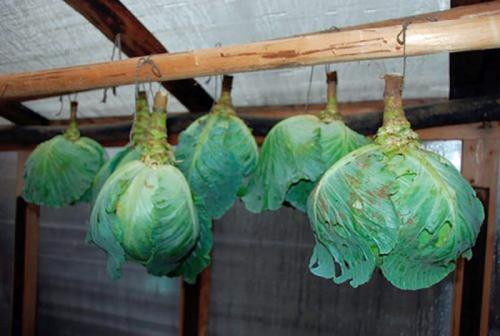
Basement
Storage room. In such a room, cabbage can be stored for some time. This method is most suitable for apartments, and not for private houses. In a specialized cool place, cabbage can last longer and better, only the main thing is to pack it in cling film or in parchment paper. The forks must not be laid out tightly enough to allow air to circulate. It is in such conditions that cabbage is stored for six months.
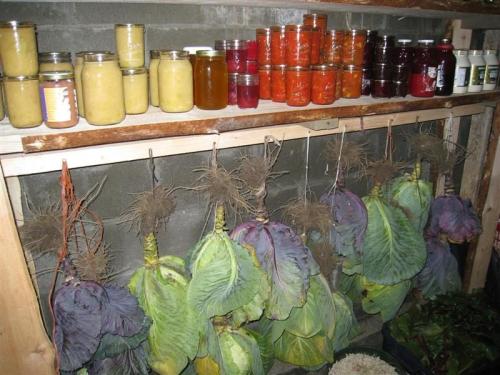
pantry
Fridge. Such a crop must be placed in a special freshness zone, where it will be possible to create the necessary temperature for preservation. If you do not have such a place, then the forks must be folded into the refrigerator section, in which the temperature is quite minimal. Cabbage heads must be wrapped in foil or parchment. In this case, your crop can be stored for about a month.

Fridge
Balcony. If this room is insulated, then it is necessary to maintain the same temperature constantly, it is also necessary to wrap the crop in paper or film. As soon as it starts to get colder, then the cabbage needs to be put in a closet or wrapped in insulation. In this case, the shelf life of cabbage will be five months.
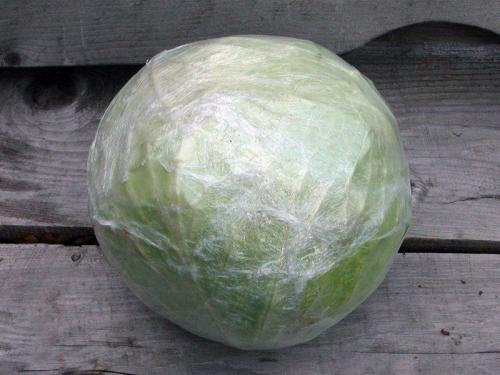
Balcony
Deepening in the ground. This storage location is perfect for large cabbage. It should be understood that cabbage heads can become damp in such a place and can rot, and when frosts begin, it becomes problematic to get the harvest from there. In this case, you need to dig a trench on a hill, the depth will be half a meter, and the width is slightly larger, straw should be put on the bottom, then cabbage is laid out, and then straw is put on top of it, at the very end, cover everything with a shield made of wood. Then it is imperative to tamp the soil from above, its thickness will be about 200 cm.
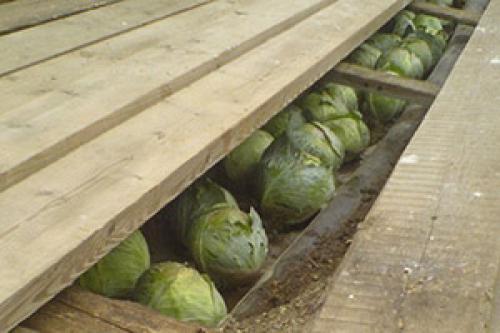
Trench
Optimal conditions
The quality of storing cabbage at home depends on the indoor climate.It is imperative to adhere to a stable temperature, which is no more than two degrees Celsius, and the air humidity should not exceed 95%. The room must be ventilated. If you follow these parameters, then your harvest will be able to survive for eight months.
Harvest storage methods
There are quite a few different ways to help preserve the cabbage crop, let's look at the different options:
- Boxes. This option is quite simple, suitable for use in a basement or cellar. In this way, the vegetables are stacked evenly, and do not touch each other. Such containers must be installed on small pallets.
- Shelves. Shelves with shelves are installed near the wall. Cabbage is laid out directly on them, which is dried in advance, peeled, and then covered with leaves on top. Be sure to fit so that there are gaps of about two centimeters between the heads of cabbage.
- In paper. In this version, only dried cabbage is stored. Newspapers can be used, only clean paper is needed for the first layer. The paper prevents the cabbage from touching, thereby allowing it to be stored for a long time and keep out of the cold. The packed cabbage is then placed in boxes or bags.
- Film. This is the most effective option. Prepared cabbage is packed in cling film, and then stacked on racks or in a special container. It is imperative to check vegetables during storage so that they cannot go bad.
How many days cabbage is pickled
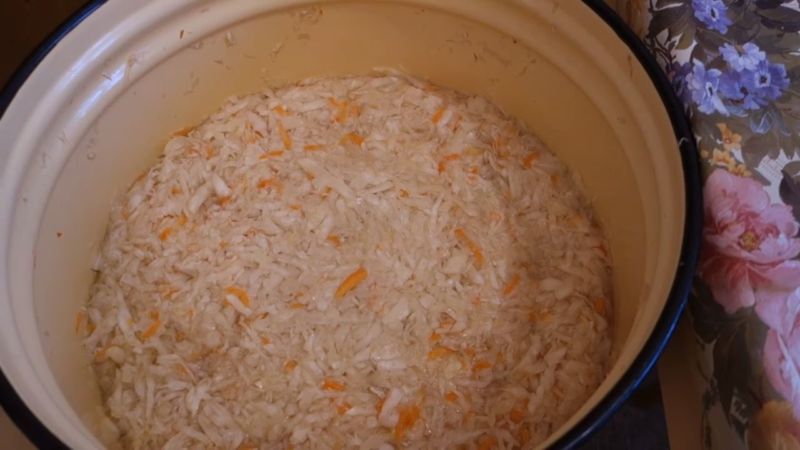
Pickling is an ideal way to preserve a vegetable. If you follow the correct proportions of the ingredients, you get a crispy and savory snack. The only negative is the need to keep the vegetable mass warm for a limited period of time.
For pickling, only late and mid-season varieties are selected. They are distinguished by a sweet taste, dense heads of cabbage and firm leaves. The fermentation process is greatly simplified due to the presence of sugar in the structure of the vegetable. Ideal for pickling varieties Snow White, Gift, Belorusskaya and Amager.
Various factors affect the souring time of cabbage, including the amount of added salt. It is advisable to adhere to the correct ratio, therefore, salt by weight of the vegetable mass should be 2-3%. For 10 kg of the mixture, add 200 g of seasoning.
Fermentation only starts at high temperatures. Therefore, a properly cooked vegetable mass is left at room temperature, which is 18-22 ° C. It is impossible to say exactly how much cabbage should be salted until cooked, so the appetizer is periodically checked, and gases are removed from it by piercing with a wooden skewer.
Typically, fermentation is carried out in the period from 3 to 5 days. At high temperatures, all vitamins are preserved, and due to the acid content in the vegetable, the appearance of microbes is prevented.
If you know at what temperature to ferment cabbage and how many days it needs to be kept in the room, you will get a very tasty and crunchy product. The ideal temperature is 21 ° C. On about the fifth day, the vegetable mass becomes sour-wine and pleasant to the taste and is moved to a cold room.
Main problems
Difficulties often arise during the preparation of pickled vegetables. They are often associated with the fact that people do not know how many days to ferment cabbage at home. They miss the deadline when it is necessary to transfer the workpiece to the cold, and the products turn sour.
Other issues include:
- lack of the required amount of juice, but you can cope with this by adding water;
- if you do not pierce the mass with a skewer, due to carbon dioxide, the product will become bitter and tasteless;
- using too many carrots will soften the vegetable;
- when the temperature regime is violated, mucus appears;
- the film occurs at low temperatures;
- lack of salt leads to tough products.
To get a tasty and healthy snack, it is recommended to figure out how many days the cabbage is fermented under pressure, which varieties are better to choose and which ingredients to use.
Storage rules
To increase the shelf life, it is important to adhere to a number of recommendations.
If you have a refrigerator
This is a great place for a snack. It is recommended to put the sauerkraut in the refrigerator in airtight bags. It is also permissible to use plastic containers. Such a container can be compactly placed. With such parameters, the product lasts well for 30-45 days.
In an oak barrel
It is best to put this container in a cool place - in the cellar or in the refrigerator. In any case, the temperature should not exceed +2 degrees.

With the systematic opening of the barrel, a film with mold will appear on the walls and surface of the brine.
It is important to remove it in a timely manner and treat the surface with a concentrated salt solution.
In banks
This is a very handy container for cabbage. It fits easily into the refrigerator. To get a quality product, it is recommended to wash the dishes well with hot water and then sterilize them. This will help get rid of pathogenic microorganisms that can lead to souring of the finished product.
When storing the workpiece in a jar, it is recommended to fill it to the top with brine, and then pour over with sunflower oil. After that, the container should be closed with plastic lids and put in a cool place. It is permissible to store the product in this way for 1 month.
In the cellar
This is a great place for sauerkraut. In winter, the optimum temperature and humidity are observed there. It is recommended to keep the workpiece in jars, closing them with metal lids. It is not recommended to store cabbage for a long time in summer, because even in deep cellars, temperature parameters reach +7 degrees.
Which cabbage is better to choose
Sauerkraut is fermented in almost every home, regardless of whether there is a private garden or vegetables are purchased on the market. But not every cabbage is suitable for pickling. In order not to be disappointed with the result of labor and the taste of the final product, you should carefully choose a vegetable. For pickling and pickling, varieties with medium and late ripening periods are suitable, which have sufficient dry matter and a denser leaf mass. Early varieties do not meet these criteria and are not suitable for fermentation.
Heads of cabbage should be chosen large, dense, not friable (the tighter the set of forks, the whiter and softer the leaves inside), white in the cut (this indicates the presence of a greater amount of sugar, which affects the fermentation process during fermentation), the taste of the head in fresh should be sweet and crunchy. The stump should also be firm and juicy. When choosing cabbage in late autumn, you need to make sure that it is not frozen.
Mid-season varieties for fermentation:
- Glory - ripens in 113-119 days, fruit - up to 5 kg;
- Gift - ripens in 120–135 days, fruit - up to 5 kg, with a sharp-spicy sourness;
- Jubilee F1 - ripens in 90–95 days, fruit - 2.5–4 kg;
- Dobrovodskaya - ripening on the 110th day, fruit - 10-11 kg, wonderful taste;
- Belarusian - ripens in 120-130 days, fruit - 3-4 kg, it is better to ferment immediately after harvest.
Late varieties for fermentation:
- Turkis - ripens in 150-165 days, fermentation is better closer to winter, fruit - 3-4 kg;
- Geneva F1 - should be fermented in late winter or early spring, fruit - 3-4 kg;
- Amager - harvested after 150–175 days, fruit - 2.4–4 kg, taste bitter in autumn, improves over time;
- Snow White, - ripening period - 145–160 days, fruit - 2.5–3.9 kg.
Hybrid varieties are also popular when choosing for fermentation, the selection of varieties is aimed at obtaining larger heads of cabbage:
- Moscow late-15 - ripens in 115–140 days, fruit - 10–18 kg;
- Gingerbread man - ripening in 150 days, fruit - over 5 kg;
- Menza F1 - ripens in 110-115 days, fruit - 5-9 kg;
You can also ferment red cabbage.It has coarser fiber and a bitter taste.
What to do with cabbage after freezing
After freezing, cabbage should not be eaten raw, it must be cooked: boiled in borscht or stewed. The reason is that when stored for a long time at low temperatures, the leaves of the vegetable are damaged by ice crystals.
When the cabbage thaws, it will look rather unpleasant, so you won't even want to consume it raw. It is better to immediately throw it into boiling water if you plan to cook cabbage soup, or on a hot skillet if you want to enjoy stewed cabbage. Do not re-freeze the vegetable after defrosting. It will be spoiled and even harmful to the digestion.
If cooked stewed cabbage has been frozen, you need to defrost it in the microwave, and then, when it has reached room temperature, cook it in the oven or in a pan.
Shelf life of cabbage in the refrigerator. How long does cooked food last in the refrigerator?
The sanitary standards for the shelf life of perishable food in the refrigerator, at a temperature of +2 - +6 degrees Celsius, approved by the USSR Ministry of Health in 1986 and still used by regulatory authorities in post-Soviet countries, can hardly be considered a guide for home use. Their main purpose is to prevent contamination of eaters, even in the most adverse conditions. Such, for example, as heat and a high level of microbial contamination outside the refrigerating chamber at the time of preparation of a semi-finished product, or a sharply reduced immunity of the consumer.
It is interesting to note that domestic standards are more stringent than in many other countries: for example, the rules for army canteens in the United States allow most types of food prepared in portions to be stored for 24 hours.
In addition, these standards do not imply the use of special storage devices: somehow tight packing of hot dishes in cling film, foil or placing them in vacuum containers. Meanwhile, such measures can really lengthen the life of the product.
Most consumers are accustomed to determining the suitability of a product based on its appearance, smell and taste. And this method has its own logic: rotting, fermentation, oxidation of fats and microbiological spoilage, which is possible in a refrigerator, as a rule, lead to a change in the organoleptic properties of food. It makes sense to play it safe when it comes to foods high in protein and moisture - raw eggs in homemade sauces, homemade meat and fish salads.
It should be borne in mind that mono-component blanks (for example, boiled rice, beans, pasta without dressing) deteriorate more slowly. Boiled root vegetables in their skins can be stored in the refrigerator for up to a week if not peeled. Of multi-component dishes, storage for 2-4 days is kept for those where vinegar is used or other organic acids are present - for example, ready-made fish or raw vegetables in a marinade, soups with sauerkraut. The most favorable storage place for cooked food in the refrigerator is the top shelf or zero "freshness zone" in advanced models.
The data published below on the shelf life, determined by SanPiN 42-123-4117-86, can be taken into account rather as information for thought. That is, focus on the ratio of indicators indicating the most perishable products, and not take a specific number of hours as a standard.
So, according to SanPiN 42-123-4117-86, finished products can be stored in the refrigerator at a temperature of +2 - +6 degrees Celsius for the following periods (in hours):
Boiled meat, large piece - 24; fried meat (large piece) - 48; stewed meat stuffed - 24; boiled meat offal
(tongue, udder, heart, kidneys, brains) - 18; fried liver - 24; fried minced meat products
(cutlets, steaks, schnitzel meatballs) - 12; meat jellies and jellied meat - 12; baked duck and chicken carcasses - 48; fried poultry and rabbits - 48; boiled poultry carcasses - 24; boiled poultry, chopped into portions, in jelly - 24; poultry cutlets - 12; boiled eggs - 24; fried fish of all types - 36; baked fish of all types - 48; boiled fish of all types - 24; stuffed fish - 24; boiled crayfish and shrimps - 12; squid products - 24; jellied fish - 24; cabbage casserole, carrot, vegetable, potato with meat - 18 fresh chopped blanched white cabbage - 12 onions, sauteed carrots - 48 sauerkraut salad - 24; peeled boiled vegetables: carrots - 24; beets - 24; potatoes - 18; salads (meat, capital, fish) unseated - 12; cakes and pastries: or with fruit finish - 72; including cake "Potato" - 36; with custard, with whipped cream - 6.
It should be borne in mind that mono-component blanks (for example, boiled rice, beans, pasta without dressing) deteriorate more slowly. Boiled root vegetables in their skins can be stored in the refrigerator for up to a week if not peeled. Of multi-component dishes, storage for 2-4 days is kept for those where vinegar is used or other organic acids are present - for example, ready-made fish or raw vegetables in a marinade, soups with sauerkraut. The most favorable storage place for cooked food in the refrigerator is the top shelf or zero "freshness zone" in advanced models.

